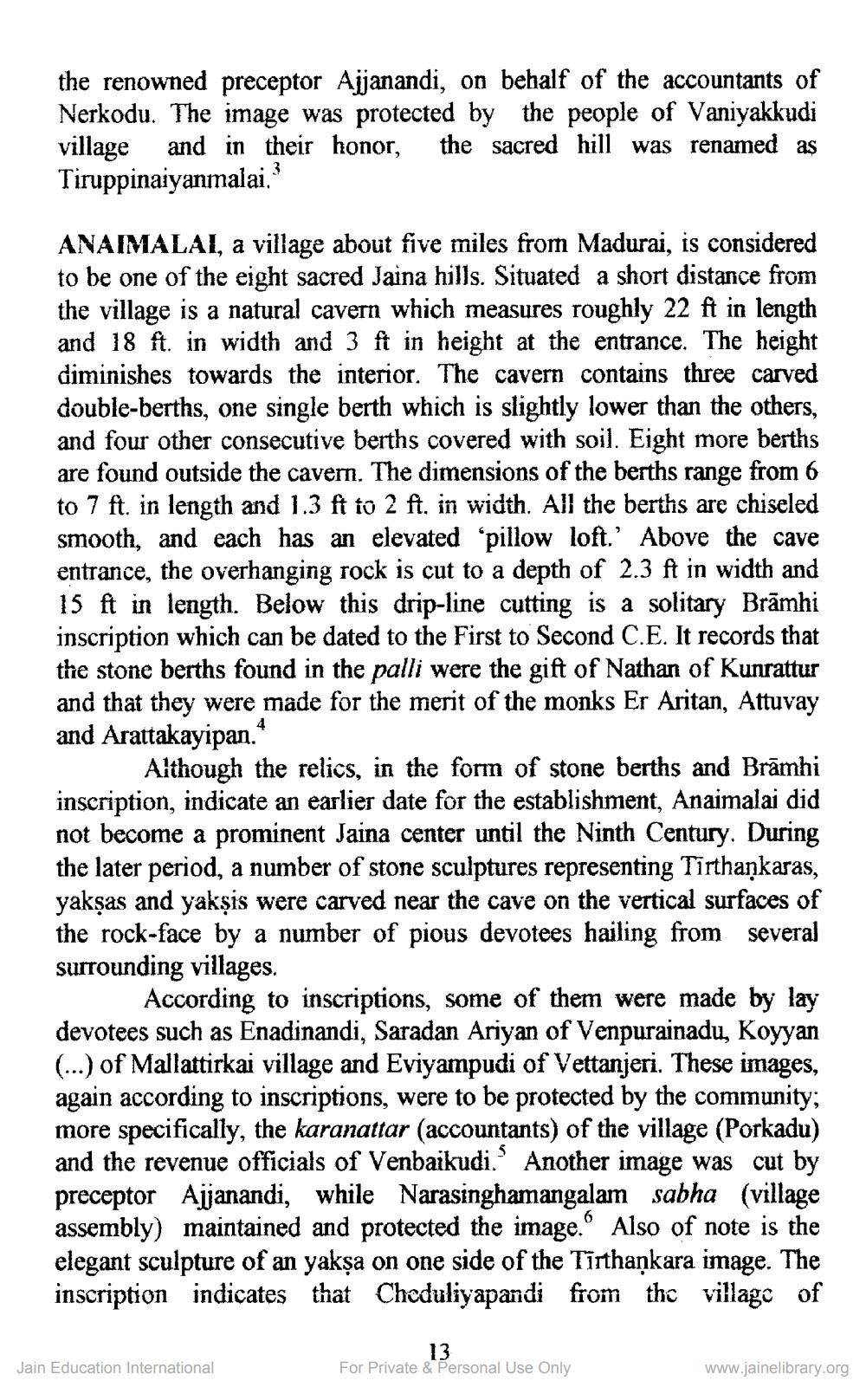________________
the renowned preceptor Ajjanandi, on behalf of the accountants of Nerkodu. The image was protected by the people of Vaniyakkudi village and in their honor, the sacred hill was renamed as Tiruppinaiyanmalai."
ANAMALAI, a village about five miles from Madurai, is considered to be one of the eight sacred Jaina hills. Situated a short distance from the village is a natural cavern which measures roughly 22 ft in length and 18 ft. in width and 3 ft in height at the entrance. The height diminishes towards the interior. The cavern contains three carved double-berths, one single berth which is slightly lower than the others, and four other consecutive berths covered with soil. Eight more berths are found outside the cavern. The dimensions of the berths range from 6 to 7 ft. in length and 1.3 ft to 2 ft, in width. All the berths are chiseled smooth, and each has an elevated 'pillow loft.' Above the cave entrance, the overhanging rock is cut to a depth of 2.3 ft in width and 15 ft in length. Below this drip-line cutting is a solitary Brāmhi inscription which can be dated to the First to Second C.E. It records that the stone berths found in the palli were the gift of Nathan of Kunrattur and that they were made for the merit of the monks Er Aritan, Attuvay and Arattakayipan."
Although the relics, in the form of stone berths and Brāmhi inscription, indicate an earlier date for the establishment, Anaimalai did not become a prominent Jaina center until the Ninth Century. During the later period, a number of stone sculptures representing Tirthankaras, yakşas and yaksis were carved near the cave on the vertical surfaces of the rock-face by a number of pious devotees hailing from several surrounding villages.
According to inscriptions, some of them were made by lay devotees such as Enadinandi, Saradan Ariyan of Venpurainadu, Koyyan (...) of Mallattirkai village and Eviyampudi of Vettanjeri. These images, again according to inscriptions, were to be protected by the community; more specifically, the karanattar (accountants) of the village (Porkadu) and the revenue officials of Venbaikudi. Another image was cut by preceptor Ajjanandi, while Narasinghamangalam sabha (village assembly) maintained and protected the image. Also of note is the elegant sculpture of an yakṣa on one side of the Tīsthankara image. The inscription indicates that Cheduliyapandi from the village of
Jain Education International
For Private & Personal Use Only
www.jainelibrary.org




